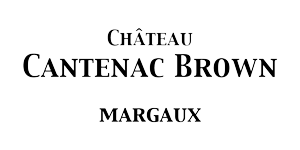Chateau Cantenac Brown, Grand Cru Classé from 1855, in Margaux was founded 200 years ago by a Scottish John Lewis Brown. Recognizable by its spectacular Tudor-style chateau, Cantenac Brown is still family owned today and has announced the construction of a new, unique winery made entirely of raw earth.
As the Easter holidays come to an end, you’re probably wondering how to choose your wine with chocolate. Chocolate lovers will never be without an excellent wine to accompany this delicacy. In this article, you will discover the best wines to accompany these chocolate pleasures thanks to the teams of Château Cantenac Brown.
Wine and chocolate: a divine parallel
The similarities between the world of wine and that of chocolate begin at the molecular level. Chocolate, like wine, contains tannins that affect the taste and appreciation of chocolate.
Like the grape varieties of the vine, there are 4 main varieties of cocoa trees with their own specificities: the forastero (a pronounced bitterness with a certain acidity), the criollo (fine and delicate, it is characterized by a particular length in the mouth), the nacional (a floral bouquet and citrus notes) and a hybrid variety, the trinitario (full-bodied, long in the mouth with a certain finesse and characterized by its richness in fats) Again, like wine, terroir influences the dominant aromas. For example, the forastero grown in Ghana is characterized by roasted notes while the same variety grown in Ecuador emphasizes floral notes. The cocoa beans, like the grapes, undergo stages of fermentation. Since 2003, the INAO has created a classification of the quality of the chocolates; chocolates “de crus” and chocolates “grands crus”.
At the tasting, the sensory analysis follows the same steps. At the level of the taste buds, we look for sweet, salty, acid or bitter flavors. The aromas can be classified according to whether they are fruity, floral, vegetal, spicy… As with wine, chocolate creates sensations in the mouth, especially when it comes into contact with saliva, these sensations express the temperature or a texture for example. We try to analyze the length in mouth. This one measured in caudalie when we taste wine, is much longer with chocolate. In the same way, the visual analysis allows to describe the brightness, the color, the nuances. We judge its homogeneity and its balance.
Another type of similarity between these two exceptional products is their symbolism in the relationship between gods and men. These two products are at the heart of history and religious myths. In the Mediterranean and in the Judeo-Christian world, the vine and the wine have a strong symbolic value. The technicality and precision required to make wine quickly gave it a prestigious use. While the grape harvest is synonymous with abundance, the winter makes the vine die to see it reborn each spring.
The observation of this phenomenon has become a symbol of resurrection and eternal life. We find in Genesis this sentence: “wine, drunk with sobriety is a second life”. The same symbolism existed in pre-Columbian America around cocoa. The deity of the feathered serpent would have given to the Men the cocoa tree to console them for having to live on Earth. He would have taught them how to cultivate it and prepare it as a hot drink that could be spiced or flavored. The beans were often used as offerings to accompany the dead to the afterlife. Chocolate was present in many of life’s ceremonies: purification of children, weddings, birth, death… Chocolate was also associated with the goddess of fertility. In the context of sacrifices, chocolate symbolized the blood offered to the gods. A parallel that is interesting to underline with the wine that symbolizes the blood of Christ.
Different food and wine pairing according to the cocoa content of the chocolate
As you know, chocolate is made from cocoa. Cocoa, like wine, has tannins. These molecules make you feel a sense of structure in your mouth. Thus, the characteristics of chocolate, and its cocoa content, greatly influence your choice of wine. The lighter the chocolate, the less tannins it has. Whether it is white, milk, 75% cocoa or 90% cocoa, chocolate does not express the same flavors and it will be necessary to make a different food and wine pairing. There is a simple way to find your way during your tastings: the darker the chocolate, the more tannins it has.
That being said, we generally advise you to opt for simple pairings: in similarity or in opposition. Therefore, you can pair a sweet and light chocolate with a wine that shares these characteristics. On the other hand, when the chocolate gets tougher (with a higher cocoa content), you can turn to more tannic wines. Or, you can serve a sweet, mild wine with a full-bodied chocolate.
However, some pairings can have pitfalls. In order to avoid these, we recommend that you use a sweet wine; this is the case with the dark chocolate presented in the following article.
Wine and type of cocoa
Criollo is the rarest and most acclaimed of the cocoa varieties. It is appreciated for its elegance in the mouth. Its chocolate is fresh with distinctive notes of red fruits and mint. If you have the chance to taste it, don’t hesitate to open a bottle with dominant red and black fruit aromas to sublimate this chocolate.
A chocolate from Ecuador made from Arriba cocoa will surprise you with its intense notes of coffee and licorice. To enhance it, choose a red wine with character. The chocolate will coat the tannins of the wine to prolong them in mouth in a greedy note.
Wine and white chocolate
White chocolate is made of cocoa paste only, so it has no tannins. The flavors of white chocolate and the aromas developed during the tasting of it invite us to turn to dry or fresh wines or to sparkling wines. For example, serve an Alsace white wine or a Riesling, these wines will complement the sweetness of the white chocolate without overdoing it. These pairings on the fruit and sweetness will satisfy the taste buds of lovers of beautiful tastings.
On the other hand, in case you feel like an explorer, you can turn to more original pairings. For this, you should turn to a red wine based on Cabernet Franc. This pairing is based on contrast and allows you to associate the sweetness of the dish with the tannins of the wine.
Wine and milk chocolate
Milk chocolate often appears as an intermediate between sweetness and intensity for which choosing a wine can be difficult. So, to choose the right red wine with milk chocolate, we recommend a Pinot Noir or Merlot based wine. If your choice is Merlot, we advise you to choose a wine that has already evolved, with melted tannins. The balance between the fruit of the food and the fruity aromas of the wine will be perfect.
If you prefer to drink a white wine with your milk chocolate, avoid sweet wines that will bring too much sugar. Dry wines will be more refreshing. Alsace will be your ideal companion with its great Riesling.
Wine and dark chocolate
Dark chocolate has a high cocoa content. It is one of the foods for which the realization of a food and wine pairing can be particularly perilous. Thus, it is sometimes necessary to move away from red wine to natural sweet wines or spirits.
If the cocoa content exceeds 80%, play it safe and choose a sweet or mutated wine that will underline the complexity of the aromas of a high cocoa content chocolate. If it reaches 100%, wine is not what you need. Choose a spirit: some fruit liqueurs or a whiskey will complement your delicious square of chocolate. Avoid white, rosé or bubbles, even if you like them. Their acidity would damage the flavors of a quality dark chocolate.
You can also turn to a red wine with an evolved tannic structure. For this, choose vintages that are at least 10 to 15 years old. Grenache and Merlot are powerful grape varieties that go particularly well with dark chocolate. A Cornas or a Bandol will underline the intensity of the dark chocolate and accompany it in length of mouth.
Red wine and chocolate
The question is sometimes asked: can we marry red wine and chocolate? The answer is obviously yes, as you will have understood in this article. However, in general, you must take care to match the tannic structure of the wine with the tannic structure of the chocolate. The red wine and the chocolate must be similar or complementary for a successful pairing. A wine that is too acidic will accentuate the bitterness of the chocolate. Very rough tannins will reinforce the bitterness and dryness in the mouth. A wine that is too flat will disappear next to the power of a dark chocolate. You can thus choose a Grand Cru Classé of 1855 with your chocolate, provided that you choose a vintage that has already evolved.
Chocolate and mutated wine
A mutated wine is a wine whose fermentation has been stopped before being completed. A part of the sugars remains and the alcohol is expressed in a liqueur-like form. Port or pineau are part of the mutated wines. They are often quite powerful but with a certain sweetness. They are a good match for chocolates with a cocoa content of more than 80%. They counterbalance perfectly the bitterness.
Indeed, the bitterness and roasted aromas perfectly complement the sweetness and power of this type of wine. A Tawny or a red Lillet with a square of 90% or 95% chocolate is a truly perfect match.
Wine and cooked chocolate
Even in preparation, chocolate continues to express its tannins. In a cake, brownie, pouring or melted, chocolate in preparation can be accompanied by a glass of wine that would highlight the softened tannins of the chocolate. Contrary to the tasting of a slab of chocolate, chocolate preparations tend to smooth the tannic side, so you should choose a young wine that will highlight and emphasize these tannins rather than crush them.
On the other hand, if your dessert is sweet, an advanced wine will counterbalance and melt this sugar. A sweet white wine with a particularly sweet dessert will create a heavy ensemble that it is better to avoid, seeking instead balance. Nevertheless, prefer a sweet wine with a dessert that is not too sweet.
Furthermore, if you serve a chocolate cake, choose an expressive wine with relief. A wine from the Rhone Valley or a Cornas will support the chocolate side of your dessert without overwhelming it. The fruit and spice aromas will give depth to your preparation.
To pair a chocolate fondant, choose from wines dominated by Grenache or Syrah. These grapes will complement the sweetness of these recipes with fruit and pepper. With a chocolate fondue, serve a Cornas that will play on the aromas of roasted chocolate to create a beautiful harmonious whole.
If you enjoy chocolate truffles, this full-bodied, melt-in-the-mouth delicacy will pair perfectly with a Muscat de Rivesaltes.
You now have all the information you need to succeed in your wine and chocolate tasting. All you have to do is apply what you have learned and feed yourself with it. To you, these moments of gustatory pleasure.


